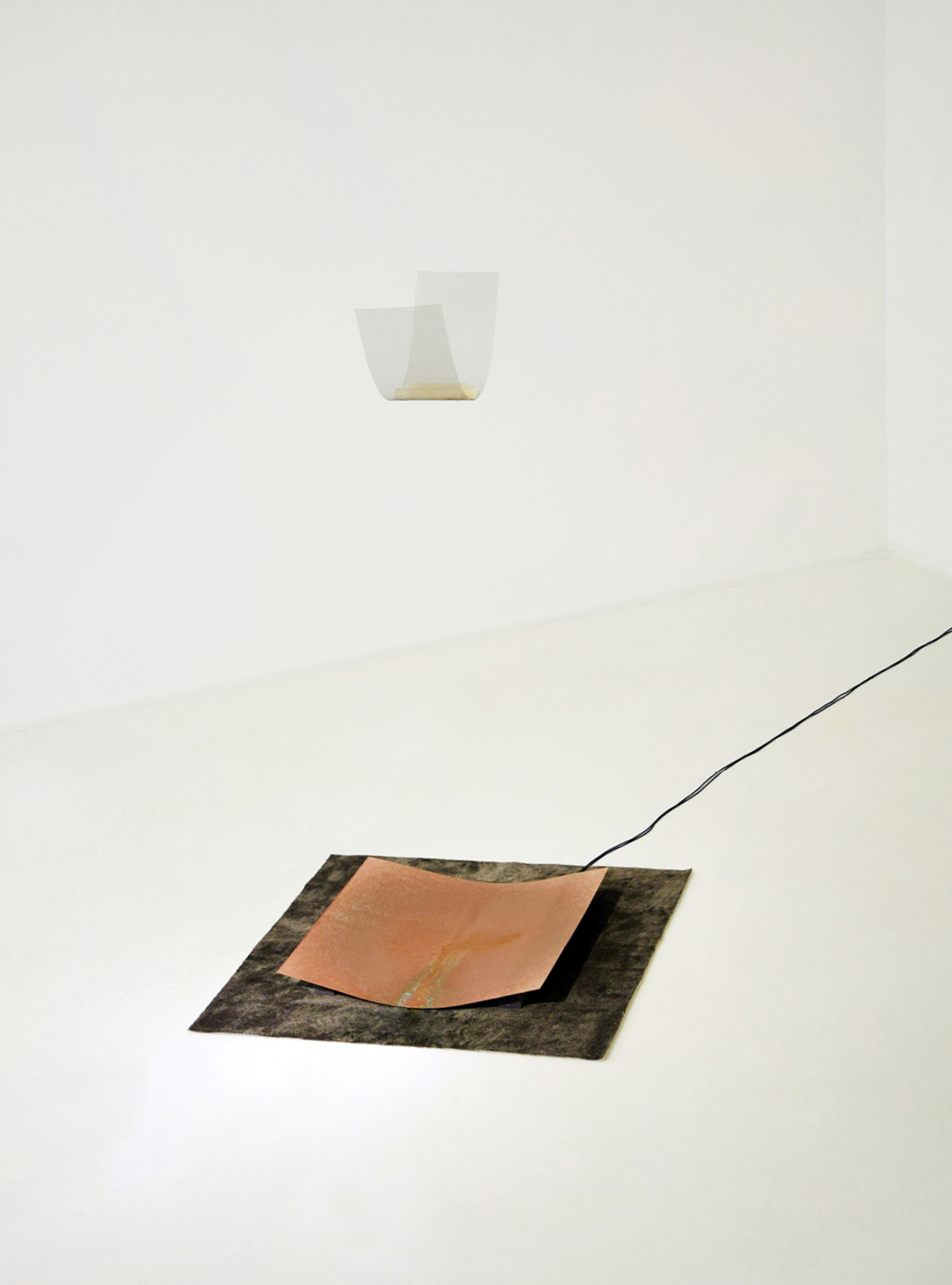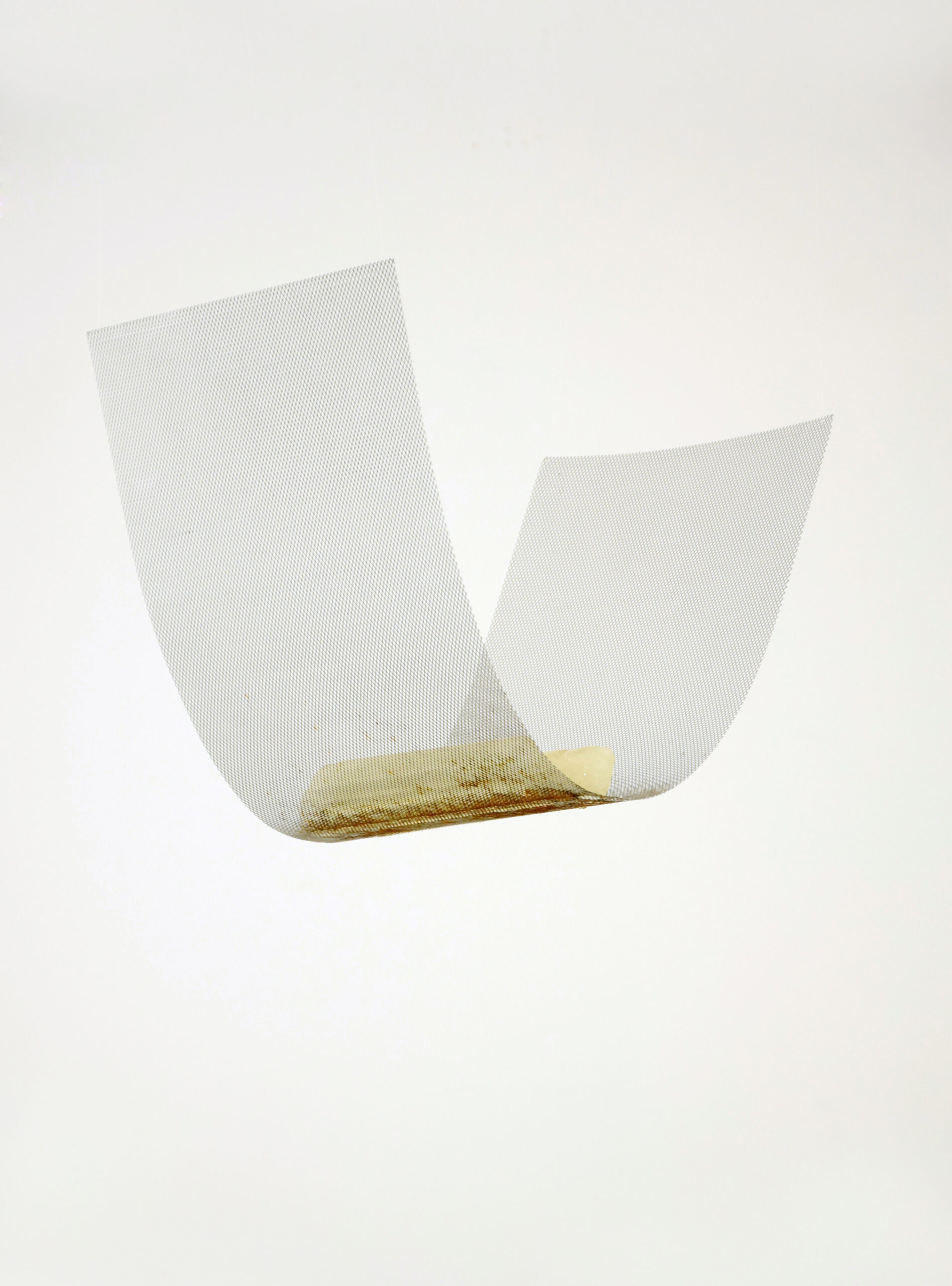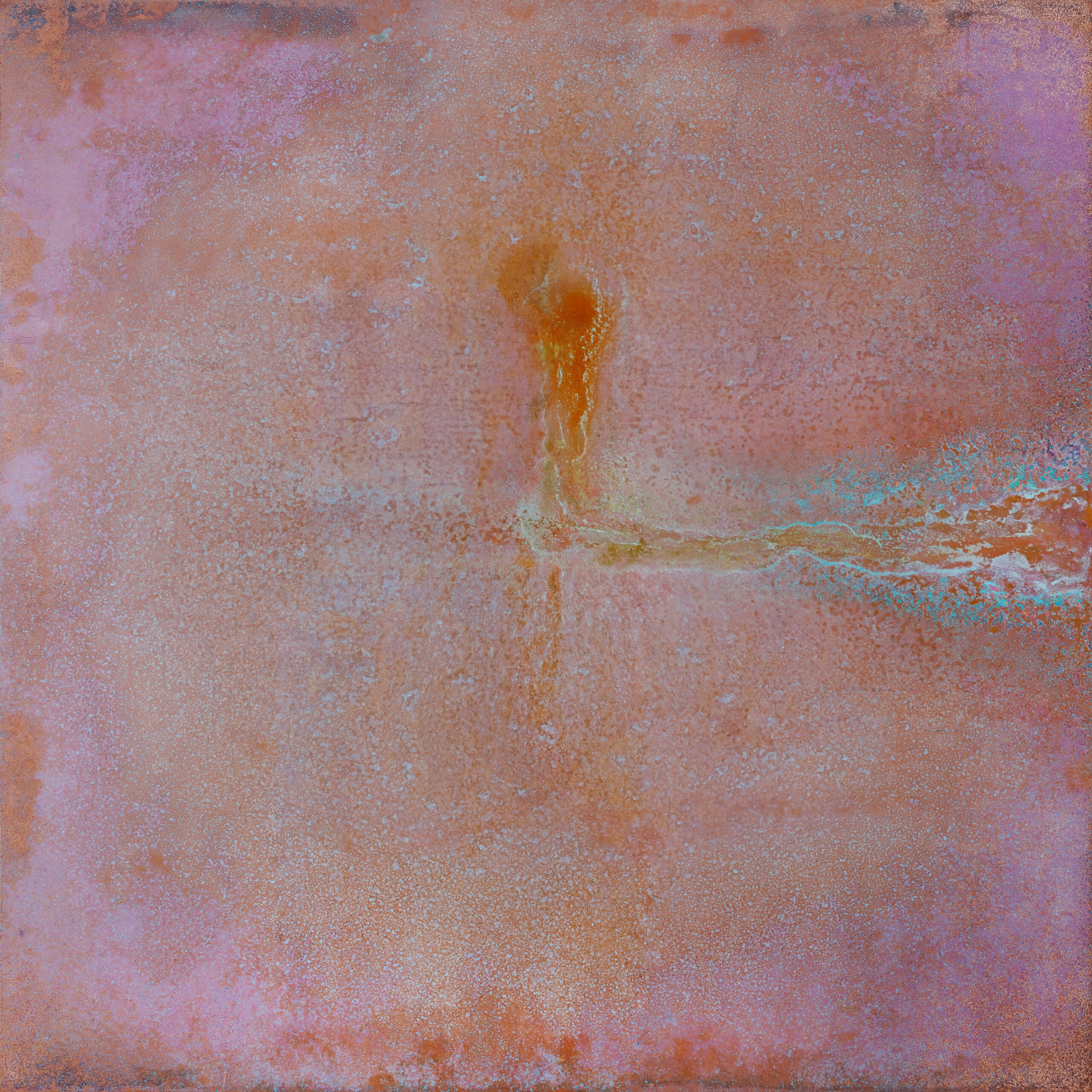


just a puddle – A square copper plate (100 cm × 100 cm) is placed on six spirals. The plate bends slightly in the middle and forms a channel. The copper plate does not touch the ground. The spirals give the plate room to swing easily with minimal load. Two contact microphones are attached to the bent copper plate, which are connected to an amplifier. Everything lies on a square carpet.
Above the installation, a perforated sheet (30 c m × 100 cm) is suspended at the short ends. The suspension creates a strong bend and therefore on the lowest point a supporting surface. On this surface are three frozen rods (30 cm, diameter 5 cm). They consist of rainwater, which was for a long time in a kind of basin in the urban environment.
At room temperature, the rods melt and the melted water drips through the perforated sheeting onto the copper plate. When it hits the plate, the water drop produces a sound which is amplified by the microphones and makes the room sound. The melting process takes about four hours. The copper plate, at the beginning still shiny and bright, is changed and oxidised by the segments in the rainwater.
just a puddle – Eine quadratische Kupferplatte (100 cm × 100 cm) wird auf sechs Spiralen gelegt. Die Platte biegt sich etwas in der Mitte durch und bildet eine flächige Rinne. Das Kupferblech berührt den Boden nicht. Die Spiralen geben der Platte Spielraum, bei minimaler Belastung leicht zu schwingen. An der gebogenen Kupferplatte sind zwei Kontaktmikrofone angebracht, die mit einem Verstärker verbunden sind. Alles liegt auf einem quadratischen Teppich.
Über der Installation ist ein Lochblech (30 c m × 100 cm) an den Enden der kurzen Seite aufgehängt. Die Hängung erzeugt eine starke Biegung und dadurch am tiefsten Punkt eine Auflagefläche. Auf dieser Fläche liegen drei gefrorene Stäbe (30 cm, Durchmesser 5 cm). Sie bestehen aus Regenwasser, das lange Zeit in einem Art Bassin im städtischen Umfeld stand.
Bei Zimmertemperatur schmelzen die Stäbe und durch das Lochblech tropft das Schmelzwasser auf die Kupferplatte. Beim Auftreffen erzeugt der Wassertropfen einen Klang, der durch die Mikrofone verstärkt wird und den Raum beschallt. Der Schmelzprozess dauert ca. vier Stunden. Die Kupferplatte, zu Anfang noch hoch glänzend und blank, wird durch die Segmente im Regenwasser verändert und oxidiert.